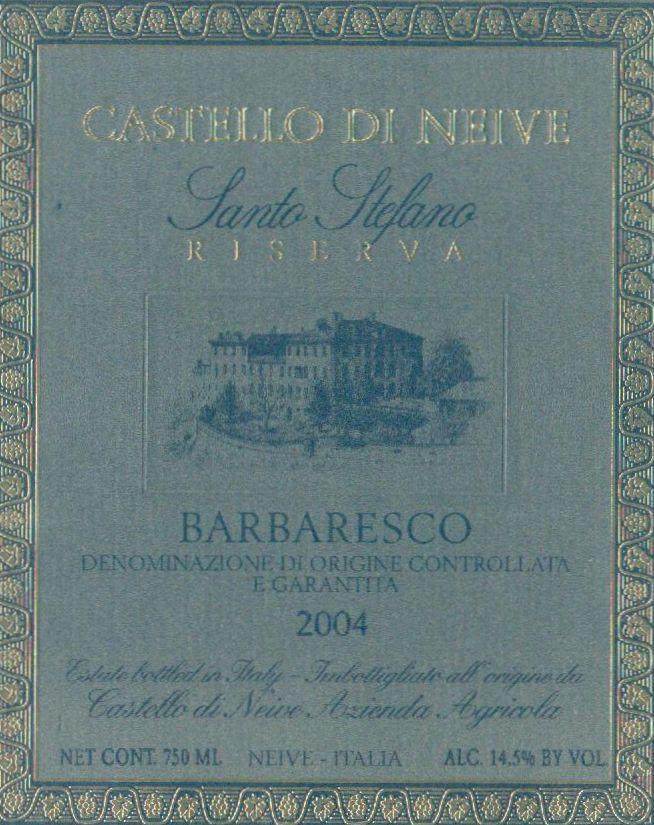2004 Barbaresco Red Blend
The Castello Di Neive Santo Stefano Riserva from the renowned Barbaresco region is a captivating red blend that showcases the best attributes of its terroir. This vintage from 2004 presents a rich ruby color that entices the eye. On the palate, it reveals a full-bodied character that is complemented by bright acidity, creating a delightful balance. The wine is fruit-forward, with prominent notes of dark cherries and plums, intertwined with nuances of tobacco and leather that add depth and complexity. Its tannins are notable and structured, providing a firm backbone that supports the wine's longevity. As a dry wine, it offers an elegant finish, making it a superb choice for those special occasions or to savor with hearty dishes.
The Castello Di Neive Santo Stefano Riserva from the renowned Barbaresco region is a captivating red blend that showcases the best attributes of its terroir. This vintage from 2004 presents a rich ruby color that entices the eye. On the palate, it reveals a full-bodied character that is complemented by bright acidity, creating a delightful balance. The wine is fruit-forward, with prominent notes of dark cherries and plums, intertwined with nuances of tobacco and leather that add depth and complexity. Its tannins are notable and structured, providing a firm backbone that supports the wine's longevity. As a dry wine, it offers an elegant finish, making it a superb choice for those special occasions or to savor with hearty dishes.




